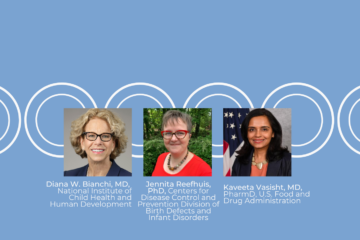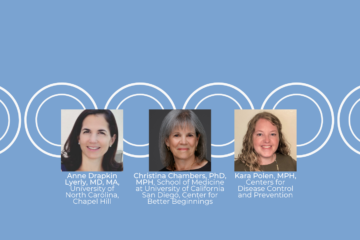Including pregnant and lactating populations in research is critical to gaining a greater understanding of the safety and efficacy of medications on these populations and improve outcomes for both mother and baby. However, women of childbearing age have historically been excluded from clinical trials. In 1977, as a result of certain drugs (namely thalidomide) causing birth defects, the U.S. Food and Drug Administration issued guidance that banned most women of “childbearing potential” from participating in clinical research studies.
While critical steps have been taken to promote greater inclusion of pregnant and lactating populations in clinical trials, such as the Task Force on Research Specific to Pregnant Women and Lactating Women (PRGLAC) that was established as part of the 21st Century Cures Act, these populations are still routinely excluded from clinical trials. Without reliable data, women who are pregnant or nursing may stop taking necessary medications or may stop breastfeeding earlier than necessary.
To discuss the culture surrounding the exclusion of pregnant and lactating populations in research and address concerns and considerations surrounding their involvement in clinical trials, the Coalition to Advance Maternal Therapeutics (CAMT) in December 2022 hosted the congressional briefing, “Addressing Concerns and Considerations Surrounding the Inclusion of Pregnant and Lactating Populations in Research.” During this event, panelists Christina Bucci-Rechtweg, MD, Novartis Pharmaceutical Corporation; Aarong Pawlyk, PhD, Eunice Kennedy Shriver National Institute of Child Health and Human Development (NICHD); Leyla Sahin, MD, U.S. Food and Drug Administration (FDA); and Catherine Spong, MD, University of Texas Southwestern Medical Center discussed how to ensure the appropriate inclusion of these populations and review the current state of this type of inclusion within research.
The panelists agreed that exclusion of these populations is still persistent and that misconceptions exist. Dr. Sahin noted despite the decades that have passed since the Thalidomide tragedy, “it’s created a profound impact on how we look at conducting clinical trials on women.” Dr. Pawlyk added that among the greatest misconceptions that remains for including pregnant in lactating populations in research is that it’s actually protecting them.
“Untreated disease during pregnancy has negative outcomes for the mother and the child. We need to reframe this as, ‘We need to protect pregnant and lactating populations through research, and not from research.’”
Dr. Aaron Pawlyk, “Addressing Concerns and Considerations Surrounding the Inclusion of Pregnant and Lactating Populations in Research,” December 2022
Yet, progress has been made. Dr. Pawlyk shared that among the most important steps that has been taken at the federal level was the removal of pregnant and lactating women as a “vulnerable population” from the Common Rule. “We know that pregnant and lactating persons can be included safely in clinical trials, as appropriate,” he said. “Not everyone knows that… An important issue is communicating and educating the broad clinical trial research endeavor.” Further, Dr. Sahin said that there has been an evolution in thinking. Whereas before research on pregnant and lactating populations was steeped in fear, Dr. Sahin said that now, “The question is not ‘Do we do the studies?’ It’s ‘How do we do the studies? How do we account for risk mitigation? How do we get the necessary studies before we include these populations in clinical trials?’” There are now collaborative discussions about how to address these challenges head on.
Looking ahead, panelists see many possibilities for the appropriate inclusion of pregnant and lactating populations in research. Dr. Spong shared that currently, being a pregnant or lactating woman means “automatic exclusion” from participation in trials. Further, there is currently no requirement for researchers to document why a study is going to exclude pregnant and lactating women. Changing this could lead to an important change in culture. “There is a robust history going back decades of research going on in pregnant and lactating women that is done well,” said Dr. Spong. “Women want to participate in research, and they want that that data because without that data, the medications and therapies that are given to them are given to them without evidence to support its use…”
Dr. Bucci-Rechtweg added that there are many ways in which we can pragmatically obtain information that better informs clinicians’ ability to prescribe the right therapies, including through anecdotal evidence or clinical practice, or from medications that have been developed where there’s a definitive need.
“Since the 1960s, the lens through which we’ve looked at the pregnant population for research, in particular for medicines development, has been largely through a safety lens. The reality is that many [pregnant women] become pregnant with comorbid conditions, and there’s a real need for us to be evaluating these patients from an efficacy lens. There’s plenty of research to tell us that the better we manage mom’s disease, the better her outcomes during pregnancy and the better the outcomes for the developing fetus and ultimate infant. There’s a real opportunity here… Women are… not only potentially willing participants, they’re actually on these medications.”
Dr. Christina Bucci-Rechtweg, “Addressing Concerns and Considerations Surrounding the Inclusion of Pregnant and Lactating Populations in Research,” December 2022
Panelists stressed the need to continue these conversations and collaborate across sectors in order to drive change. While this work is not without its challenges, they were optimistic that solutions are within reach.
View the webinar to hear additional takeaways from this important conversation.



0 Comments